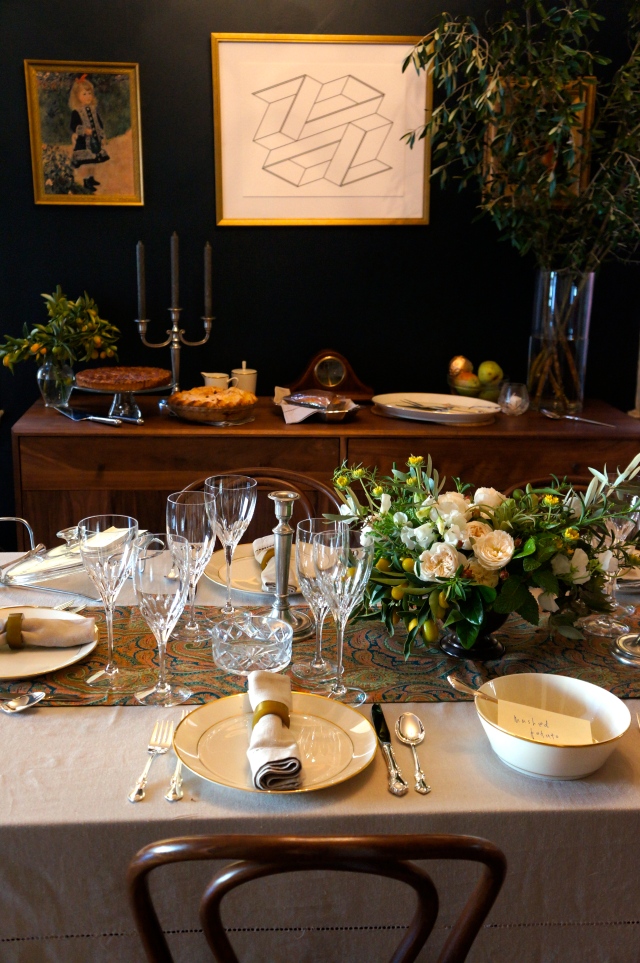 It is cold here, people. I’ll admit my blood has thinned out in San Francisco, but I swear it’s not our wimpy version of winter weather. There’s real frost and everything! Water mains exploding all over the place! It’s weather that calls for a cozy stew or sauce, something to simmer on the stove all afternoon to warm the place up a bit.
It is cold here, people. I’ll admit my blood has thinned out in San Francisco, but I swear it’s not our wimpy version of winter weather. There’s real frost and everything! Water mains exploding all over the place! It’s weather that calls for a cozy stew or sauce, something to simmer on the stove all afternoon to warm the place up a bit.
We have a freezer full of flavorful wild boar meat, thanks to a hunting colleague of my husband’s who felled the mighty beast himself. Next to lamb, wild boar is my favorite protein, a passion ignited after tucking into plate after plate of cinghiale in the Umbrian countryside and finding fabulous versions here in the city. In my kitchen, we turned one boneless ham into a thick, meaty pot of sugo to dress papardelle and polenta, cracked our last bottle of Montefalco Sagrantino and toasted to another year of the good life. It may be cold outside, but it’s warm in here.
Wild Boar Sugo
makes about 4 1/2 quarts of sauce
- 3 pounds wild boar meat, cut into 1″ cubes
- 7 oz prosciutto, finely chopped
- 1/2 cup extra-virgin olive oil, divided
- one bay leaf
- 3 medium carrots (about 1/2 lb), peeled and diced
- 5-6 celery stalks (about 1/2 lb), diced
- 2 medium yellow onions (about 1 1/2 lb), finely chopped
- 4 fat garlic cloves, minced or pressed
- kosher salt and freshly ground black pepper
- one tablespoon dried oregano
- one tablespoon fennel seeds, crushed
- one tablespoon fresh thyme, minced
- one tablespoon fresh rosemary, minced
- 2 tablespoons tomato paste
- one 28-oz can whole San Marzano tomatoes
- one bottle (750 ml) of full-bodied red wine
- 2 cups beef broth
- cooked pappardelle or polenta, for serving
Open the wine and pour yourself a glass. In a small bowl, mix the oregano, fennel, thyme and rosemary and set aside. Season the chopped boar meat with a teaspoon each of salt and pepper. In a large saute pan, warm 1/4 cup of olive oil over high heat and brown the meat, working in batches if necessary.
Meanwhile, in a Dutch oven or heavy soup pot, warm 1/4 cup of olive oil over medium heat. Add the prosciutto and cook for 2 minutes. Add the onions, celery, carrots, garlic and bay leaf. Season the aromatics with a pinch of salt and pepper and let sweat for about 8-10 minutes; add the tomato paste and let cook for 2 more minutes. (Turn the heat down to low if you’re finished with this step before the boar meat’s done browning.) Transfer the browned boar meat to the Dutch oven. Turn the saute pan off the heat and deglaze by pouring one cup of red wine, scraping up any browned bits; turn the heat to medium and reduce the wine a bit, 2 minutes. Pour into the Dutch oven.
Add the herbs and the canned tomatoes (including the juice), smashing with the back of your spoon to break them up. Add 2 cups of red wine and 2 cups of beef broth. Bring to a lazy simmer and cook, loosely covered, for 3 1/2 hours, until the meat is tender. (If the sugo is overly watery towards the end, leave uncovered for the last hour or so; if too much liquid has cooked off, add a little more beef broth.) Add salt or more herbs to taste. Serve warm over papardelle or polenta with a drizzle of good olive oil and lots of Parmigiano-Reggianno cheese grated over top.
Note: you can make the sauce ahead (it’ll be even better the next day) or portion the cooled leftovers into pint or quart-size containers for freezing.














